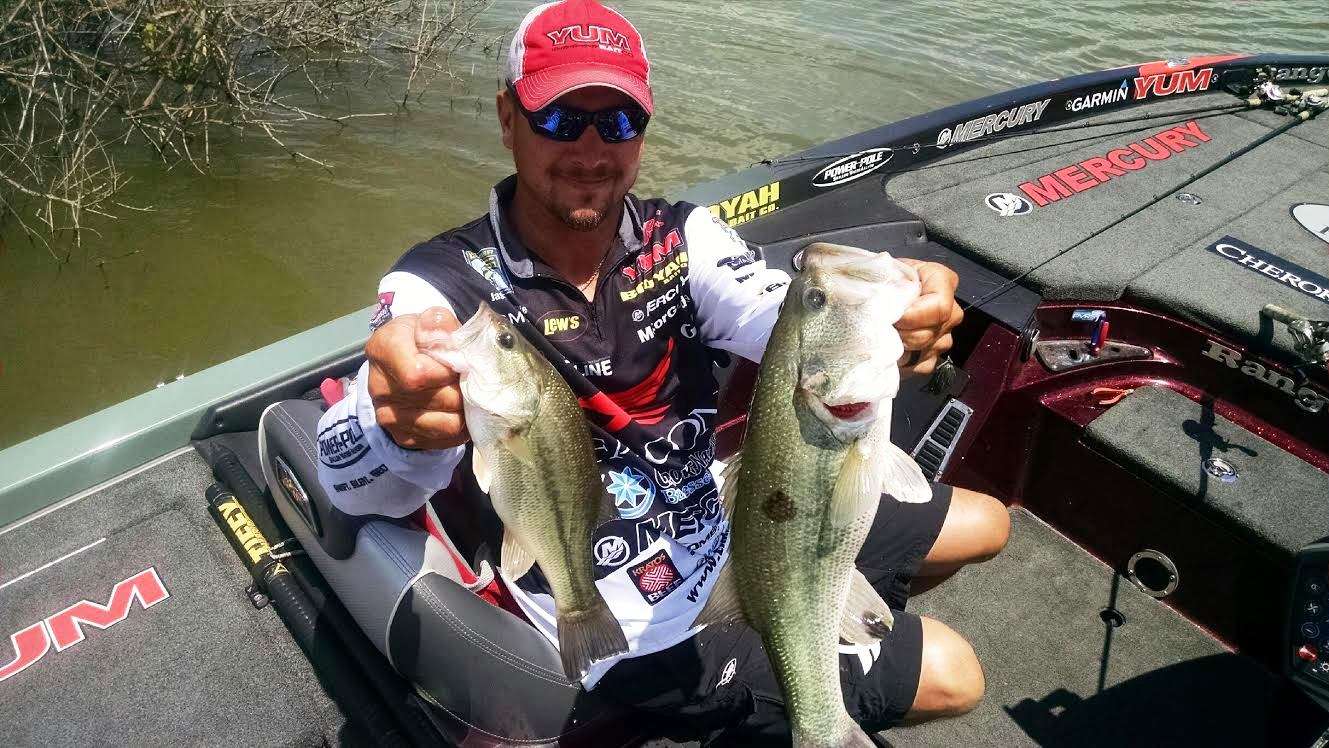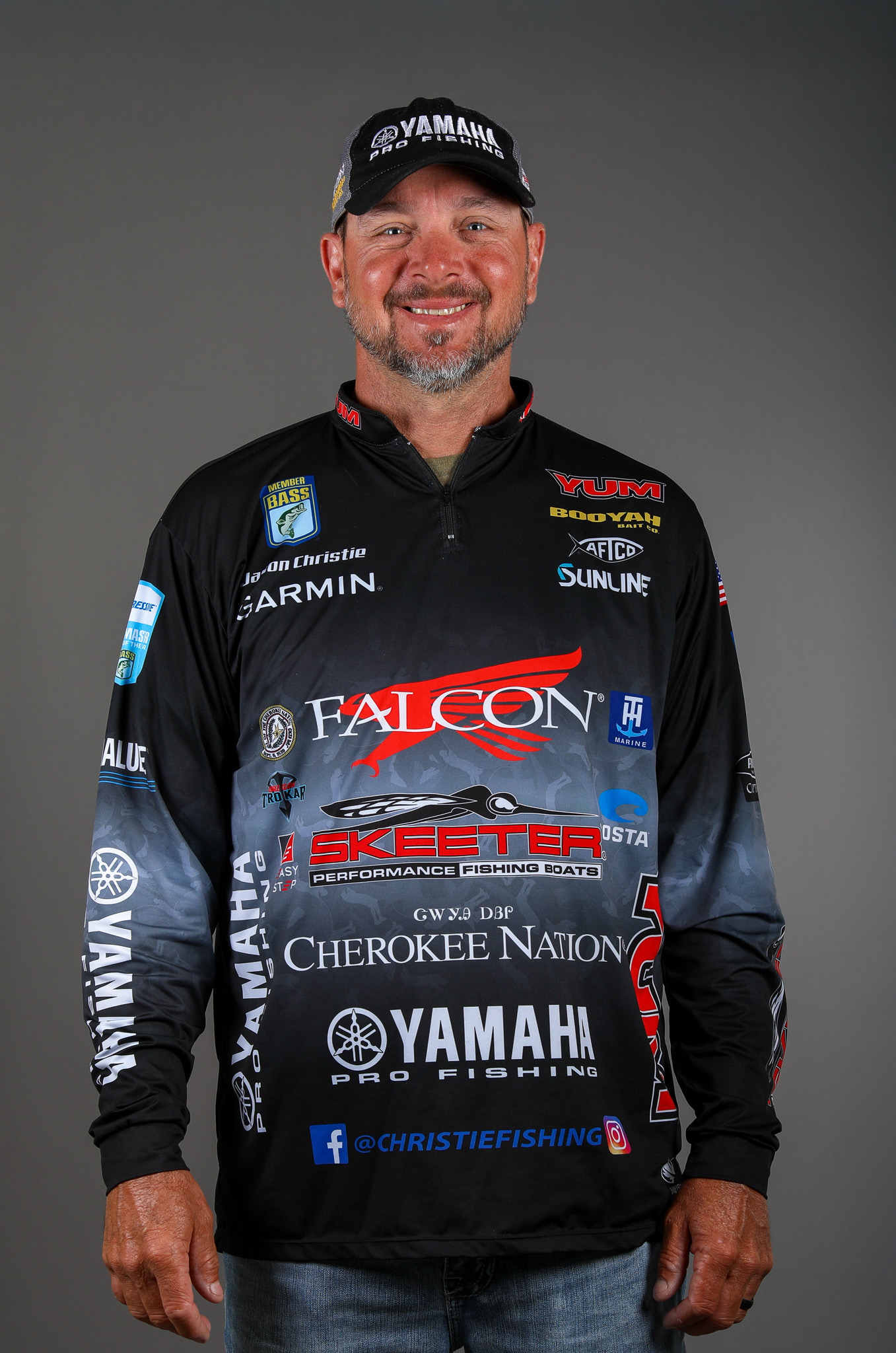
Competition depends a lot on making the most of your opportunities.
For example, the recent Bassmaster Elite Series event on Wheeler Lake was kind of a mix of stages. I think there were a few fish that were still spawning, a few fish that were done and a few fish that were on the shad spawn — it was really just a mixture.
In these situations, you always want to stay ahead of the fish, so they’re coming to you. This time of year, when we have a mixture of prespawn, spawn and postspawn, I try to avoid the prespawn because that’s going away.
Those prespawners are going to be the heaviest of the year, but that window of opportunity will be closing rapidly. Therefore, I’d rather fish for fish that are heading into their next cycle.
On Wheeler, I caught my fish on a Texas-rigged YUM Christie Critter and a Booyah Bankroll jig. I was flipping the Christie Critter and swimming the jig around bushes and grass. I just put the trolling motor down and fished what was in front of me.
I also caught a couple on a Booyah buzzbait and I caught another one on a Zara Spook. That’s how this time of year can be — you can go junk fishing and you might end up catching them on a lot of different things.
That’s especially true on Wheeler where there’s a lot of diversity. You can go in one creek and there’s 100 yards of lily pads, 200 yards of weeds and buck bushes.
You might think that a lake with a lot opportunity would be an easy one to fish, but for me, that’s actually more of a challenge, because I don’t know the lake that well. Also, Wheeler’s not the type of lake you can pattern; you just go fish.
On this lake, you won’t find a lot of similar habitat. You’ll see a stretch of bank, and you’ll get bites, but it’s not like you can run down the river and see a lot of that same scenario.
What I’ve found is that a lot of times, a river system like Wheeler is more of a spot fishery. You find a lot of spots that have fish in them rather than running a pattern.
I think one exception would be when the fish are out deep, you can run a pattern, but it’s more about the location than the actual ingredients for the pattern.
During the tournament, I ended up fishing one general area that was pretty big. I had a lot to work with, but I spent a few hours each day fishing new waters just trying to expand and find additional spots.
Each night, I was studying maps and my electronics to try and find something that looked like where I was fishing. The frustrating thing was that each time I tried a new area, it was too shallow, or it wouldn’t have any structure in it.
That’s why it’s hard to just run around and fish new water on a lake like Wheeler because there’s not a lot of stuff that’s the same.
Another key point about these river system lakes is that the power generation schedule dictates the current strength, along with water levels. This hurt me during the tournament because I was fishing the bank — buck bushes and weeds — and the TVA was fluctuating the water all week.
I was fishing so shallow my trolling motor was kicking up mud the entire time. There was just enough fish in the area to keep me interested, but I think it would have been a whole lot better if the water level would have stabilized.
Ultimately, it came down to a bad decision on my part. I had enough bites in practice to convince me that I could go in, fish my strength by staying on the bank and have an opportunity to catch some big ones.
As it turned out, I had more big bites in practice than I did in the tournament. I think the water fluctuation was the biggest reason.
But that’s why practice decisions are such a critical part of this game. When you practice for an Bassmaster Elite Series event, you don’t hang around an area forever and try to figure it out. You coast through the area, you make your evaluation and, if it looks good, you come back during the tournament.
When I got bit in practice, I didn’t know if those fish were spawning or if they were just in there feeding. I suspected that some were spawning, but in the tournament, I realized that they were just up feeding in the higher water because I couldn’t get bit in some of the same bushes where I’d caught fish earlier in the week.
Also, in practice, I did better in the afternoon and evening when the water was coming up. Ultimately, I just didn’t put all the pieces together until after the tournament.
I ended up doing okay with a 33rd-place finish, but what’s aggravating is that, in this year’s first two events — the Classic and the first Elite event on the St. Johns River — I had the opportunities to win. Since then, I haven’t had those opportunities.
That means I haven’t felt comfortable taking chances because, at this point, I’m fishing to make the Classic, more than I’m fishing to win. Hopefully, that changes in the next event. Hopefully, I can get on a good enough pattern in practice to win.

